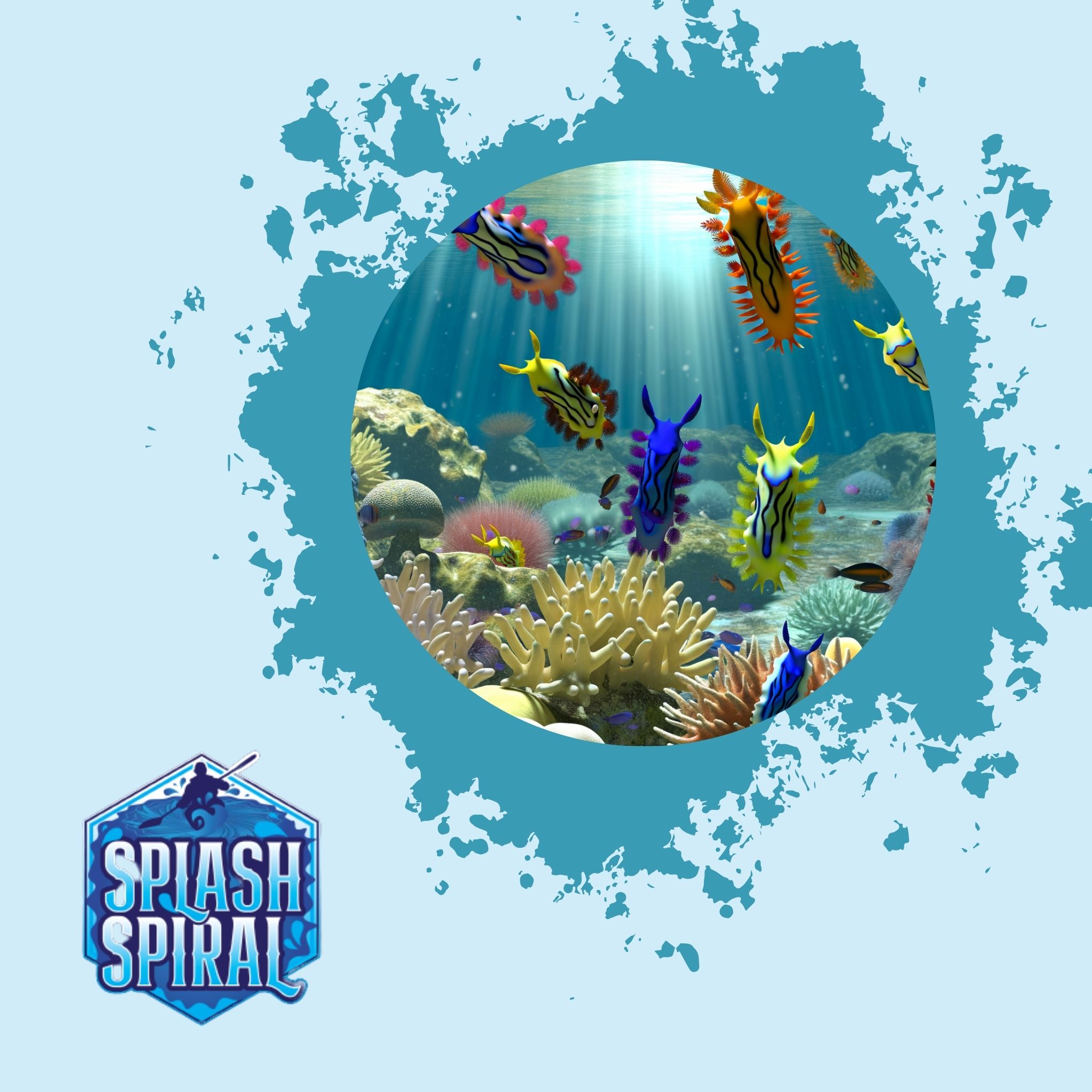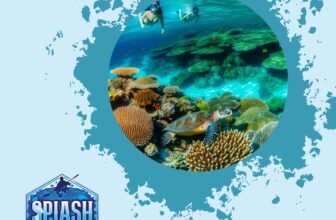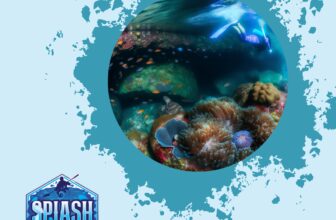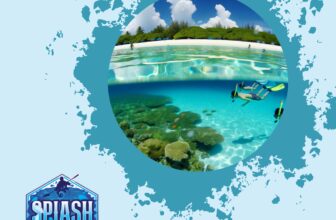
Nudibranchs, commonly known as sea slugs, captivate divers and marine biologists alike with their dazzling colors and unique behaviors. These soft-bodied marine mollusks are a vital part of underwater biodiversity, playing crucial roles in marine ecosystems. Their conservation is essential for maintaining healthy oceanic environments.
Introduction
Nudibranchs, often referred to as sea slugs, are a fascinating group of soft-bodied marine mollusks that draw the admiration of divers and marine biologists alike. These creatures are celebrated for their striking appearances, which include an array of vibrant colors and intricate patterns, making them a visual marvel for underwater explorers. However, their allure goes beyond aesthetics.
In marine ecosystems, nudibranchs play significant roles. They contribute to the health of coral reefs and other underwater environments by engaging in various ecological functions such as grazing on algae, sponges, and other small organisms. These activities help maintain the balance of the ecosystem, showcasing nudibranchs as essential actors in marine biodiversity.
Understanding the diversity, behavior, and conservation status of nudibranchs is crucial for anyone interested in diving or marine biology. Not only does it enhance the appreciation and awareness of these remarkable creatures, but it also underscores the importance of protecting their habitats to ensure that the ocean remains a vibrant and balanced ecosystem for future generations.
Diversity of Nudibranch Species
Let's talk about the incredible variety of nudibranchs you'll encounter beneath the waves. These sea slugs boast an impressive array of shapes, sizes, and colors, putting even the most colorful coral reef to shame.
Firstly, nudibranchs come in all sorts of shapes and sizes. Some are small—so tiny you might need a magnifying glass—while others can be surprisingly large, stretching several inches. Their body shapes can range from sleek and simple to elaborately frilled and flamboyant. You might see some that look like ribbons, while others resemble puffy, spiky sea anemones.
Now, let's dive into their colors. If you think the rainbow has only seven colors, think again. Nudibranchs flaunt a spectrum of hues that includes bright oranges, deep purples, electric blues, and vibrant greens. Some even have intricate patterns and markings that can hypnotize onlookers. These dazzling colors aren't just for show; they serve as warnings to potential predators about their toxicity or bad taste.
The importance of this diversity isn't just for show. Each species of nudibranch plays a unique role in its respective marine ecosystem. This biodiversity helps stabilize environments, making them more resilient to changes and threats. Plus, their varied diets—from algae to sponges to even other nudibranchs—ensure that different parts of the marine food web remain balanced.
In short, the diversity of nudibranchs isn't just a treat for the eyes. It's a crucial component for maintaining healthy, thriving oceanic ecosystems. So next time you're diving and spot one of these spectacular creatures, take a moment to appreciate not just their beauty but their role in the underwater world.
Behavior of Nudibranchs
Nudibranchs are fascinating creatures with a variety of behaviors that enthrall divers and marine enthusiasts. These behaviors not only highlight their adaptability but also their role in marine ecosystems.
General Behaviors
Nudibranchs, despite their delicate appearance, are quite resilient. Key behaviors include:
- Movement: They glide along the ocean floor using a muscular foot, leaving a trail of mucous. This mucous can deter predators, showcasing their ability to produce chemical defenses.
- Evasion: While they might look sluggish, nudibranchs can be surprisingly agile when needed, evading threats with a quick, undulating motion.
Feeding Habits
When it comes to dining, nudibranchs are anything but picky. They exhibit a wide range of feeding behaviors, such as:
- Grazing: Some nudibranchs graze on algae.
- Preying: Others prey on invertebrates like sponges, bryozoans, and hydroids.
- Toxin Utilization: Their ability to consume toxic prey and incorporate these toxins into their own defense mechanisms is particularly fascinating. For instance, the blue dragon nudibranch preys on the poisonous Portuguese man o' war, repurposing its stinging cells for its own protection.
Reproductive Behavior and Life Cycle
Nudibranchs are hermaphrodites, meaning each individual possesses both male and female reproductive organs. This unique characteristic allows them to mate with any other adult nudibranch of their species.
- Mating Rituals: During their intricate mating rituals, two nudibranchs will align themselves head-to-tail and exchange sperm.
- Egg Laying: Following fertilization, they lay egg ribbons or clusters, which can house hundreds to thousands of eggs, depending on the species. These egg masses are often attached to a hard substrate, like rocks or coral, providing a secure environment for the developing larvae.
Life Cycle
- Planktonic Larval Stage: The life cycle of a nudibranch typically begins with a planktonic larval stage. These larvae float freely in the ocean currents before settling onto the substrate and metamorphosing into their adult form.
- Dispersion: This planktonic phase is crucial for dispersion and genetic diversity among populations, allowing nudibranchs to colonize new areas and maintain robust population structures.
Conclusion
Understanding the behaviors of nudibranchs—from their feeding habits to their unique reproductive processes—provides valuable insight into their role in marine ecosystems. For beginner divers, observing these behaviors can be a delightful and educational experience, offering a glimpse into the intricate lives of one of the ocean's most captivating creatures.
Importance of Nudibranchs in Marine Ecosystems
Nudibranchs, despite their delicate appearance, play a key role in ocean ecosystems. Their actions and interactions within the marine environment contribute significantly to maintaining a balanced and healthy ecosystem.
Key Roles in the Food Web
Nudibranchs primarily feed on:
- Sponges
- Anemones
- Other sea slugs
By preying on these organisms, nudibranchs help regulate their populations. This predatory behavior keeps certain species in check, maintaining balance within coral reef ecosystems and preventing any one species from dominating.
Symbiotic Relationships and Defense Mechanisms
Nudibranchs often engage in symbiotic relationships with other marine life:
- Consumption of Toxic Prey: Some species consume toxic prey and store the toxins within their tissues, making them less palatable to predators.
- Chemical Ecology Insights: This defense mechanism offers valuable insights into marine chemical ecology and potential biomedical applications.
Nutrient Cycling and Food Source
These vibrant sea slugs also serve as a food source for various marine predators, including:
- Fish
- Larger invertebrates
By fulfilling multiple roles, nudibranchs facilitate nutrient cycling within their habitats, ensuring a dynamic and resilient marine environment.
Indicators of Ecosystem Health
The presence of nudibranchs in a reef system serves as a sign of a healthy and balanced ecosystem. Their activities support:
- Biodiversity
- Ecosystem resilience against environmental changes
Conclusion and Call to Action
Beginners and aspiring divers should appreciate the integral role of these stunning creatures and support efforts to protect their delicate habitats. Advocating for nudibranch conservation is crucial for sustaining the overall health of marine ecosystems.
Threats to Nudibranch Conservation
Nudibranchs face a range of threats, many of which are human-induced. One of the primary concerns is pollution—whether it's chemical runoff, plastics, or other debris, pollution degrades their delicate habitats. Nudibranchs are especially vulnerable to pollutants because they absorb substances directly through their soft tissues.
Climate change further exacerbates the issue. Rising ocean temperatures and acidification impact nudibranchs in multiple ways, from altering their feeding grounds to affecting their reproductive cycles. Shifts in water temperature can lead to coral bleaching, which in turn affects the availability of prey for many nudibranch species that rely on corals.
Habitat destruction is another significant threat. Coastal development, destructive fishing practices, and dredging activities can decimate the habitats that nudibranchs call home. Deep-sea mining, in particular, poses a growing threat to these unique creatures. For a more in-depth look at how deep-sea mining disrupts marine environments, check out SplashSpiral's article on environmental concerns.
The implications of these threats are profound. As nudibranchs diminish, the ripple effects on marine biodiversity and ecosystem health become apparent. These creatures play a nuanced role in the food web, often serving as indicators of the overall health of their environment. When nudibranch populations decline, it can signal broader ecological problems that eventually impact other marine organisms, including those crucial for human consumption.
In summary, the threats to nudibranch conservation are multifaceted and deeply intertwined with broader environmental issues such as pollution, climate change, and habitat destruction. Recognizing and mitigating these threats is essential for preserving not only nudibranchs but the overall health of marine ecosystems.
Conservation Efforts
When it comes to protecting nudibranchs, there are a few strategies worth knowing about. First off, Marine Protected Areas (MPAs) are crucial. These zones restrict certain activities like fishing and anchoring, providing a safe haven where nudibranch populations can thrive. MPAs can be incredibly effective; they not only safeguard various nudibranch species but also help maintain the overall health of marine ecosystems.
Another significant conservation effort involves citizen science. Simply put, this is where everyday people, especially divers like you, get involved in research and data collection. By photographing and noting the nudibranchs you encounter, you contribute valuable information that scientists use to monitor populations and understand species distribution. Platforms like iNaturalist and local conservation groups often have programs where you can submit your findings.
Moreover, some regions are beginning to implement specific policies aimed at reducing threats like pollution and habitat destruction, which directly benefit nudibranch habitats. Targeted measures against climate change, stricter regulations on coastal development, and better waste management practices are all part of these broader efforts.
In essence, every small action helps. Whether it's advocating for larger MPAs, participating in citizen science projects, or simply being a responsible diver, your input is vital. The combined efforts of governments, conservation organizations, and individual enthusiasts can make a significant difference in the survival of these colorful marine marvels.
Identification and Research
Identifying different nudibranch species can be a rewarding and fascinating challenge, especially for beginner divers. Here are some straightforward tips to make the process easier:
-
Observe the Patterns and Colors: One of the most striking features of nudibranchs is their vivid coloration and intricate patterns. Take note of the predominant colors and markings; these often provide the first clues in identification.
-
Look at the Body Shape: Nudibranchs come in various shapes and sizes. Some are elongated and slender, while others are more compact and rounded. The structure of their “cerata” (the finger-like projections on their back) or “gills” can also be telling.
-
Note the Habitat: Different species prefer different environments. Pay attention to whether they’re crawling on coral, rock, or sand. Certain nudibranchs have a preference for specific habitats that can narrow down your options.
- Behavioral Traits: Some nudibranchs exhibit unique behaviors such as swimming, burrowing, or clustering in groups. Observing these behaviors can provide additional identification clues.
For tools and resources to assist in your identification journey, consider the following:
-
Field Guides: Invest in a reputable field guide that covers the marine area where you dive. Guides like "Nudibranchs of the World" are comprehensive and user-friendly.
-
Mobile Apps: There are several apps dedicated to marine life identification. Apps like “SeaSlug Forum” can be particularly useful for on-the-spot ID help.
-
Online Databases and Forums: Websites such as iNaturalist or the Nudibranch section of SplashSpiral’s diving page offer extensive databases and community support where you can upload your photos for crowd-sourced identification.
Engaging in underwater research is beneficial for both the diver and the scientific community. As a beginner, participating in citizen-science projects can be an exciting way to contribute. Here’s how you can get involved:
-
Join Local Dive Clubs: Many dive clubs participate in research initiatives and biodiversity surveys. Becoming a member can provide you with a platform to get involved in organized research.
-
Volunteer for Marine Conservation Programs: Organizations often seek volunteers for species monitoring and habitat restoration projects. This hands-on experience is invaluable.
-
Share Your Finds: Use platforms like SplashSpiral to document and share your sightings. Your contributions can provide valuable data for ongoing research projects.
By familiarizing yourself with these identification methods and research opportunities, you'll not only enhance your diving experiences but also support the broader scientific understanding and conservation of these intriguing sea slugs. Dive in, start exploring, and become part of the nudibranch conservation community!
Conclusion
In conclusion, nudibranchs are more than just underwater showstoppers—they are essential players in the marine ecosystem. Their roles in the food web, contribution to coral reef health, and intriguing symbiotic relationships underline their ecological importance. Ensuring their survival hinges on continued and robust conservation efforts.
As threats like pollution, climate change, and habitat destruction persist, the need to protect these vibrant creatures becomes ever more urgent. Divers and ocean enthusiasts alike can make a significant impact by participating in conservation activities, from citizen science projects to advocating for stronger environmental protections.
Understanding and valuing the unique world of nudibranchs not only enriches our diving experiences but also empowers us to contribute to the preservation of marine biodiversity. Let's champion the cause for these fascinating sea slugs, ensuring they continue to brighten our oceans for generations to come.







